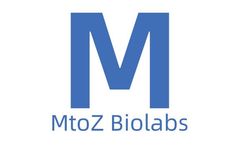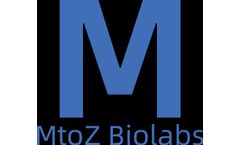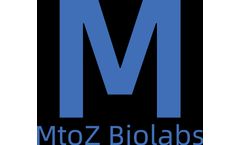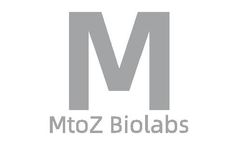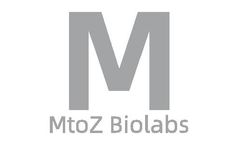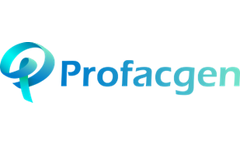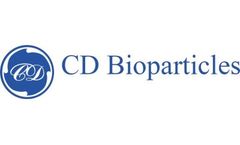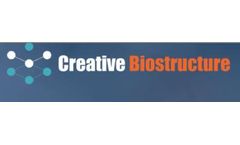Drug Application Articles & Analysis: Older
38 articles found
Pharmaceutical Development: These cell lines are essential in the drug discovery pipeline, allowing for high-throughput screening and functional assays to evaluate drug efficacy and safety. Biotechnology Applications: Beyond disease research, knockin technologies are employed to create cell lines producing therapeutic proteins, monoclonal ...
Alfa Cytology has introduced its advanced drug development services for brain tumors. Alfa Cytology, celebrated for its cutting-edge biotech solutions and extensive tumor research expertise, has recently introduced brain tumor drug development services, designed to empower researchers in understanding the intricacies and unique challenges associated with brain ...
Antibody drugs are a type of drugs that treat diseases through artificially synthesized antibodies, which bind specifically to target molecules for therapeutic purposes. ...
Glycosylated impurities refer to a kind of glycosylated product formed during the synthesis, storage, and use of drugs, mainly resulting from non-enzymatic reactions between sugars and drug molecules. ...
They are currently a focus in new drug development. The design of antibody drugs is a complex and delicate process, and its success often depends on a deep understanding and precise analysis of the antibody itself. ...
Circular Dichroism (CD) uses the absorption properties of optically active substances to analyze the molecular structure of drugs. It has very valuable applications in drug analysis, including:1. ...
Antibody drugs, particularly monoclonal antibodies (mAb), play a critical role in the treatment of many diseases, especially in the treatment of cancer and immunological disorders. To ensure the effectiveness and safety of these antibody drugs, it is necessary to perform activity testing.Definition of Antibody ActivityThe activity of an antibody ...
They also have a high degree of stability and solubility, making them suitable for various routes of administration. One of the first applications of nanobodies in drug delivery was the development of targeted drug delivery systems. ...
They are essential in unraveling the molecular mechanisms underlying cell death and are instrumental in drug development, cancer research, and developmental biology. Types of Apoptosis Assays Morphological Assays: These assays examine the characteristic morphological changes that occur during apoptosis. ...
In addition, carboxylic acid PEGs can be involved in regulating interactions with cells, such as fusion with cell membranes and cellular uptake, providing effective carriers for cell therapy and gene delivery. Applications of PEGs and Carboxylic Acid PEGs Drug Delivery PEG and its carboxylic acid derivatives have important applications in ...
Microneedles have gained significant attention in recent years for their potential in drug delivery applications. These tiny needles, typically measuring less than 1 mm in length, can painlessly penetrate the skin and deliver drugs in a precise and controlled manner. ...
Inorganic Nanoparticles Functionalization Inorganic nanoparticles, such as gold or silver nanoparticles, have unique properties that make them suitable for drug delivery applications. These nanoparticles can be functionalized with targeting ligands or therapeutic agents to enhance their efficacy and specificity. ...
By exploiting this phenomenon, MST enables the quantification of binding affinities, stoichiometry, and thermodynamic parameters of molecular interactions. Applications of Microscale Thermophoresis Drug Discovery and Development Microscale Thermophoresis plays a crucial role in drug discovery by providing insights into the binding affinity ...
This makes liposomes more advantageous in terms of preparation and long-term storage. Differences in Application Areas Micelles: Micelles are commonly used in cosmetics, drug delivery systems, and biochemical research. They are suitable for applications requiring rapid release of drugs or active ingredients. Liposomes: Liposomes ...
In recent decades, PROTACs have become an attractive technology in drug development. Candidate drugs like ARV110 and ARV-471 have entered Phase I/II clinical trials, indicating the potential of PROTACs in the treatment of cancer and other diseases. ...
This approach provides stronger and longer-lasting fluorescence but may affect the stability and behavior of the liposomes. Applications of fluorescent liposomes Fluorescent liposomes are proving valuable in various research areas, including: Cancer research: Studying tumor targeting and drug delivery strategies for improved cancer therapy. ...
Applications of Protein Engineering Protein engineering is a versatile tool with a wide range of applications, including: Drug Discovery and Development: Protein engineering is being used to design novel therapeutic proteins, such as enzymes, antibodies, and scaffolds, for the treatment of various diseases. ...
This technology enables precise control over drug release kinetics, making it suitable for various therapeutic applications. ...
Polymeric microspheres, including poly(lactic acid-glycolic acid) copolymers (PLGA), poly(lactic acid) (PLA) and polycaprolactone (PCL) microspheres, are highly biocompatible and are widely used to develop particulate drug delivery systems. By introducing a variety of small molecules such as coordinating groups, hormones, proteins, peptides, nucleotides, enzymes, carriers, and ...
Introduction of Drug Affinity Responsive Target Stability (DARTS) Drug target protein identification is an important step in the research and development of new drugs. Drug Affinity Response Target Stability (DARTS) is a technique that can rapidly and directly identify potential target proteins of small molecule ...



